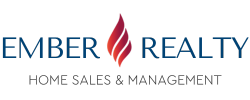It’s a bit like “rent-to-own,” but buyers actually own a small piece from the very beginning. As time passes, their ownership percentage slowly goes up.
RALEIGH, N.C. – As higher mortgage rates lock out many would-be buyers, alternative home-financing solutions have emerged out of Silicon Valley.
Among them is Ownify, a San Francisco-based startup that is testing its product after landing $7 million in seed funding led by Lobby Capital.
Unlike “rent-to-own” models, such as Divvy Homes, where buyers rent the property until they’ve saved for a down payment, Ownify’s model offers fractional ownership, or shared equity. Instead of taking on debt, buyers partner with an equity provider to buy the home with cash, putting a 2% down payment. They build equity in the home while living in it.
“We set out to create ‘Rent-to-Own 2.0, or a better version of rent-to-own,” Ownify founder and CEO Frank Rohde, told The News & Observer in a video call. “We provide true equity ownership. It’s not a savings account.”
However, fractional ownership, as a concept, isn’t new. Here’s a closer look at what first-time homebuyers should know.
What is fractional ownership?
Fractional ownership, also known as shared ownership, allows multiple owners or families to acquire high-value assets like a house, a vacation home or a condo. Each party owns a portion, or “fraction,” of the property, matching their share of the purchase price. This allows buyers to maximize their purchasing power, without having to pay the full cost upfront. The value of each party’s share changes as the asset appreciates or depreciates.
It can also take several forms: joint tenancy, which gives all parties an equal interest and rights to a property; or tenancy in common, which gives each owner a partial interest in the property.
This model first became trendy in the 1960s with the idea of “vacation timeshares.” Later, it grew to include all sorts of property like supercars, airplanes, and yachts.
Most recently, it’s resurfaced as an alternative home-financing solution with products like Ownify.
As inflation, high mortgage rates and home prices keep homeownership out of reach for many, Ownify’s founder, said he’s using fractional ownership’s model to create an “attractive alternative” to the traditional debt-based mortgage.
How it works
Ownify customers, nicknamed “Ownis,” partner with an equity provider to buy the home with cash. They make a comparatively low down payment of 2% and, while living in the home, they build equity over time – roughly 1.6%, or about 13 “bricks,” per year.
In return, Ownify covers additional upfront costs, such as due diligence fees and earnest money.
Effectively, they buy their home “brick by brick,” Rohde said.
After five years, they own about 10% of their home’s equity. At that point, they can buy the remaining equity, at fair market value, “or cash out and walk away.”
Fractional ownership versus ‘rent-to-own’
Divvy Homes and Home Partners are among a handful of rent-to-own companies currently on the market.
In contrast to fractional ownership, rent-to-own is a type of lease agreement that allows tenants to rent a property while saving for a down payment, or working on their credit. After a certain time, the tenant has the option to purchase the home. In some programs, part of their monthly rent will also go toward the purchase.
The price is fixed and determined at the onset of the agreement.
The pros and cons
Proponents argue fractional ownership offers first-time buyer numerous upsides.
Among them: It gives buyers access to a property they couldn’t otherwise afford and more bargaining power with “all-cash” offers. There’s also shared accountability, a lot less risk, and the chance to build equity if it goes up in value.
On the downside: Buyers don’t own the property outright. There are also fewer financing options and high maintenance costs and fees, depending on their ownership agreement.
Cory Sherman is a broker with Homegrown Real Estate in Durham. He is not an “Ownify-accredited” real estate agent. He said the company’s promise to cover due diligence and earnest money expenses could be a “game changer.”
“In an environment where the competitiveness of a buyer’s offer can wildly depend on how much they’re able to offer in due diligence, this could be huge,” he said.
But in most cases, he believes there are better options out there.
Among them: State Employees’ Credit Union or an USDA loan, which offers up to 100% financing. Others, like an FHA loan, allow eligible buyers to pay as little as 3.5% of the purchase price for a down payment.
© 2023 Raleigh News & Observer. Distributed by Tribune Content Agency, LLC.




